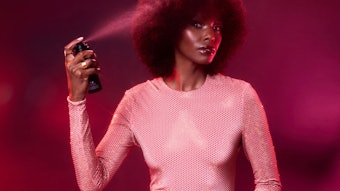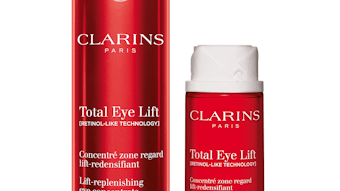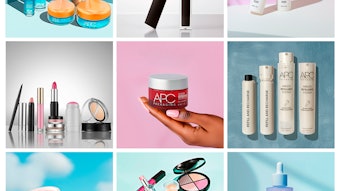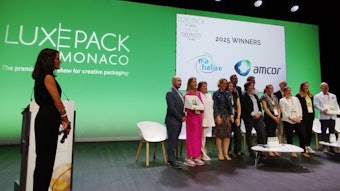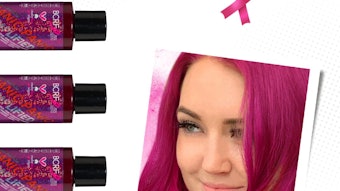- Although many beauty brand owners have ideas for the final look and appearance of their products’ packaging, there are technical and manufacturing specifications that need to be addressed.
- Working with a quality packaging supplier can lead you through the list of questions necessary to create a successful beauty package.
- The development process may include multiple steps necessary to assure all contingencies are addressed and that all the needs for the packaging are being met.
When beauty companies embark on a custom packaging project, the brand managers and creative team are often focused on the art and aesthetics of the finished package. The company molding the new bottle, however, is probably more focused on the science and engineering. Both elements are equally important in creating a successful package that meets requirements for appearance, performance, cost and availability, and that’s why it is critical for brand owners and bottle manufacturers to work in partnership to ensure a custom bottle meets all the criteria necessary for brand and product success.
A List of Questions
Many times, the process starts with a list of questions. Often, a beauty brand’s creative team has a fairly defined vision of what it wants a bottle to look like, and sometimes it even has a sample it is trying to simulate or directly duplicate. But the success of the bottle is much more than whether a packaging company can make the bottle look like someone’s vision. As the manufacturer responsible for making a bottle that can be filled, decorated, shipped and used reliably by the consumer, the packaging development team needs to ask a wide variety of questions to guide its design and engineering process.
Perhaps most importantly, what is going into the bottle? Is it watery, oily or viscous? How will it be dispensed, and has a specific closure been selected? Does the bottle need to be squeezable, or should it be rigid enough to withstand the downward pressure of a pump dispenser? And are the contents colored or clear? A dark product can impact the color of the filled container, even if the container is opaque, so knowing these things up front can help guide the color selection process for the bottle or jar.
Regarding the closure system, if the dispensing closure needs to face a particular direction to align with the front label panel, that fact may determine what blow molding process can be used. Some packaging companies have control over the orientation of the neck threads, with single-stage polyethylene terephthalate (PET) blow molding and injection or extrusion blow molded high density polyethylene (HDPE). But some other blow molding processes do not allow the neck to be oriented, so packaging companies may seek to avoid those processes if neck orientation is required.
Knowing how a container will be decorated is also critical. Will it be pressure-sensitive labeled, silk-screened or printed in some other manner? Does the bottle need decoration lugs—small indentations on the base of the bottle that allow the decorator to orient the bottle on the decoration line? Knowing what processes the bottle will be subject to enables the packaging and product developers to determine the correct wall distribution, as well as any forms of surface treatment that may be recommended. A bottle destined to be silk-screened may need to be handled differently during the takeout and packing processes to avoid any scratches or scuffing that can occur when the bottle is still hot.
While this list of questions may seem tedious to brand managers who are excited about launching a new product in a flashy new package, getting the right questions answered up front can mean the difference between having a prototype approved in weeks, or going back to the drawing board to address issues that weren’t identified in the early stages of design.
Saving Time and Money With Existing Tools
Once the customer-driven parameters of the new package have been defined, it becomes the packaging company’s job to define the best manufacturing options for creating it. At Alpha Packaging, for example, the company not only has a variety of plastics that it can blow mold but also has different blow molding processes it can use for those materials.
If designing a PET bottle, Alpha Packaging will almost always start with its existing library of preforms to evaluate whether or not an existing preform can be used to blow the bottle. The preform is essentially a “test tube”-shaped plastic component that can be reheated and blown into a variety of shapes and sizes. Both single-stage and two-stage PET blow molding processes are used, but both processes require a preform (with single-stage blow molding, the preform is made in the machine during the blow molding process instead of beforehand in a separate machine). If the packaging company can use an existing preform, that can save the brand owner quite a bit of money (Alpha estimates savings of more than $100,000, as an entirely new preform set can cost +$150,000 while a new blow set can be just $20,00 or less) in mold costs, as well as help to dramatically shorten the development process. The preform dictates the neck finish that the bottle will have, in addition to its gram weight, and it may lend itself to certain bottle shapes more than others. However, packaging companies often have an existing preform from which to make a custom bottle or jar.
If an appropriate preform does not exist—for example, if a brand owner needs a special neck on the bottle or a heavier or lighter bottle than normal—the packaging developer can work with the customer to create a custom preform that is optimized for the new bottle. Again, all the up front questions will help ensure the preform development process goes smoothly.
For HDPE bottles, the blow molding process used (extrusion or injection) also affects the cost of the mold, so all factors are taken into consideration while determining which process to use. The anticipated annual volume, closure requirements and decorating process are just a few of the criteria to consider before selecting a platform and building a new mold.
Six Steps From Art to Part
In Alpha Packaging’s package development process, most of the steps listed above would fall under the description of conceptual brainstorming, the first. Then, once the blow molding process and preform requirements have been defined, Alpha will move on to the more creative steps of an artist’s rendering—the second step—followed quickly by CAD dimensional drawings, the third step.
These two steps not only give the custom package a visual image, they also apply engineering to the design, to fill in all of the specifications the bottle will have. The CAD drawing includes details regarding the neck finish, the gram weight, all of the bottle’s dimensions and wall thicknesses, as well as the base or push-up design. Each of these parameters is critical to the function of the bottle or jar, and must be approved by the brand owner before a model is built.
As a fourth step, a shaded image will be created. A shaded image is a three-dimensional drawing that can be colored to match the final bottle’s color. Then, depending on how certain the brand owner is about the visual aspects of the design, there are two options for the fifth step, which is a physical model.
If the customer is not certain the new design is exactly what they want, Alpha typically recommends the customer invest in an SLA model—a potential fifth step. This is an exact physical model, or SLA prototype, of the 3-D drawing that gives designers, engineers, manufacturers and brand owners the opportunity to handle a physical sample of the new product. They can put the closure on the sample, apply a label and actually feel the size of the bottle in their hands. For an investment that’s usually less than $1,000, they can confirm the bottle meets their requirements from a design perspective.
The second option for a physical model is to create a unit cavity mold of the bottle or jar and run actual plastic samples. This option is often selected when the product launch deadline is approaching quickly or the customer needs multiple physical samples of the actual package. Depending on what plastic and machine platform are being used for the final bottle, this unit cavity could cost anywhere from $2,500 to $12,000. Alpha, for example, can make dozens or even hundreds of sample bottles so the brand owner can conduct line tests or create marketing mock-ups before the rest of the blow cavities are built. If this bottle design is then approved, the cost for building the unit cavity can then be applied to the cost of the final blow set. However, if modifications are required, more investment also may be required.
The last step in the package development process is the finished custom package. This is a bottle that meets all the criteria set out in the steps listed above—and is the bottle that is ready to carry the new product to retail shelves where consumers can buy it.
Successful Development
Clearly, for beauty packaging to be successful, you need more than just a great idea. A close collaboration with a packaging company as your partner can make sure you’re well-guided through all the manufacturing, decorating, processing and development ins and outs, leading to the best possible chance at success for your product’s packaging.
Marny Bielefeldt is the director of marketing for Alpha Packaging, a leading manufacturer of plastic bottles and jars for the beauty, personal care, nutritional supplement, pharmaceutical, and food and beverage industries. She has worked with Alpha since 1994 to direct the company’s marketing activities and help bring new products to market in each of the segments it serves. She is a member of the Institute of Packaging Professionals, and also coordinates Alpha’s sustainable packaging initiatives.
